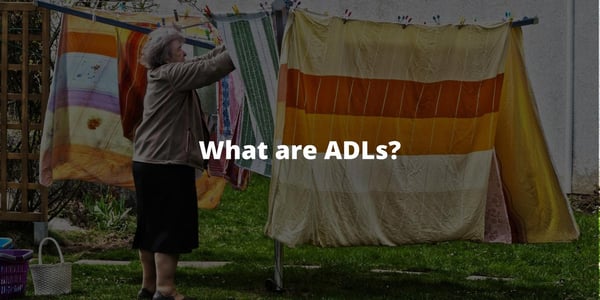As lifespans have increased, the idea of "aging in place" has gained popularity. Defined as...
Three Options for Short-Stay Assisted Living
A common perception of senior living is that it is an irreversible step in one's life journey. However, many don't realize there are short-stay options available for various situations, including assisted living.
Assisted living is for people who need some help with daily activities but are otherwise independent. Housing is typically home-like, apartment-style units with private bathrooms and some kitchen amenities. Dining is generally communal, and social activities are available for residents.
Here are three ways short-stay assisted living can be useful.
-
Post-Hospital Recovery
Consider the situation of being discharged from the hospital but not being quite ready to go home. Our blog, "After the Hospital: Recovering in a Skilled Nursing Facility," covered the details of staying temporarily in a skilled nursing setting. Often, this is a quasi-hospital environment where more rigorous care needs can be met.
Assisted living for this purpose assumes one's medical recovery needs are less intense but still at a level where going home is not practical. This setting provides staffing qualified to administer medication, and post-hospital activity like physical therapy can be facilitated. -
Caregiver Respite
Family and friends serving as caregivers for those living independently at home are unsung heroes.
In 2015 there were about 40.4 million unpaid caregivers of older adults. The stress of caregiving can be exhausting, so it makes sense for caregivers to take care of themselves periodically by taking a break. However, finding someone willing and able to fill in to care for an older adult can be challenging.
An option might be a short-term stay at an assisted living facility where the loved one would be cared for by competent professionals in a comfortable atmosphere. This allows the caregiver time away to decompress with the confidence that the older adult is well-cared for. -
Assisted Living "Test Drive"
 Moving to a senior lifestyle community represents a significant transition in an older adult's life. Whether it is an independent living apartment, assisted living, memory care, or skilled nursing care, the sense of oncoming change can feel enormous. The nagging question of, "what if I'm making a mistake?" looms large in the mind of anyone faced with this prospect. This fear can cause procrastination and resistance that could delay the transition until a health emergency or an accident happens. In this case, the family is forced into acting quickly to find a senior living opening. Unfortunately, in this necessary haste, the chances of landing in an ill-suited place increase.
Moving to a senior lifestyle community represents a significant transition in an older adult's life. Whether it is an independent living apartment, assisted living, memory care, or skilled nursing care, the sense of oncoming change can feel enormous. The nagging question of, "what if I'm making a mistake?" looms large in the mind of anyone faced with this prospect. This fear can cause procrastination and resistance that could delay the transition until a health emergency or an accident happens. In this case, the family is forced into acting quickly to find a senior living opening. Unfortunately, in this necessary haste, the chances of landing in an ill-suited place increase.
Ideally, older adults should engage in a low-pressure process to carefully consider the various options open to them. This way, different courses of action can be logically assessed with plenty of time to ask questions.
This usually means researching alternatives and making site visits. However, a further step for assisted living is to book a temporary stay at a facility.
- Getting the feel of living in an assisted living apartment. This includes experiencing the balance between privacy and receiving services like cleaning, laundry, medication administration, and assistance with daily life necessities.
- Judging the dining experience. Tasting the food at all meals will give a better sense of the overall cuisine quality and variety. Also, experiencing the mealtime ambiance in terms of service and social interaction is essential in judging the dining experience.
 Taking advantage of convenience features. A larger facility may have a beauty shop, deli, post office, general store, or bank branch. In smaller environments, provide residents with other convenient ways to take care of day-to-day chores.
Taking advantage of convenience features. A larger facility may have a beauty shop, deli, post office, general store, or bank branch. In smaller environments, provide residents with other convenient ways to take care of day-to-day chores.- Participating in social activities. Whether arranged by the staff or informal contacts, activities that bring people together are important senior living amenities. Many communities have special activity spaces like a game room, chapel, woodshop, library, party room, and swimming pool. In addition, there are frequently special interest groups (e.g., books clubs) organized events (e.g., holiday parties) or trips outside the facility.
- Meeting new friends. Social isolation is a big issue for many over 65. Assisted living communities are geared toward providing opportunities for meeting people and making friendship connections.
In offering short-term programs, facilities often have processes in place to quickly acclimate short-term residents into the flow of daily life of the community. For example, "Ambassadors" might be assigned to introduce newcomers to other residents and serve as guides to the ins and outs of what it is like to live in the facility.
As in any "try-before-you-buy" experience, not everyone who participates in a short stay will sign up to be a full-time resident. For example, one assisted living company reports that only about 50% of those who do a short stay end up making the arrangement permanent. Reasons for not moving forward could be specific to a particular facility or a perception that it's not yet time to commit to a new senior living arrangement.
Finding a Short Stay Opportunity
Not all assisted living facilities offer short stay options, and those that do may only offer them in limited circumstances. For example, a facility may provide post-hospital stays but no respite care. The best way to build a list of possible facilities is to call around and ask about their short stay offerings. For those that offer the desired type of short-stay, here are some questions to ask in the evaluation process:
- In what ways, if any, do amenities and services for short-stay residents differ from permanent residents?
- How does the facility ensure that needs of the short-stay residents are met?
- How does the facility make sure short-stay residents feel welcome?
- Are short-stay residents assigned knowledgeable guides during their stay?
- How does the facility staff keep the short stay residents' families informed?
Costs of Short Stay Assisted Living
Short stays in an assisted living community may be covered by insurance in some post-hospital cases. Specific rules differ by insurer, so it's important to check coverage ahead of time. For all other purposes, costs are out-of-pocket for the short stay resident. These can range from $100 to $250 per day. It is essential to check this out ahead of time.
Even though it might seem expensive, the cost of a wrong choice in assisted living, both in dollars and emotional stress, could be much higher.
Visit our Long-term Care Resources page for more helpful content about planning for care!






